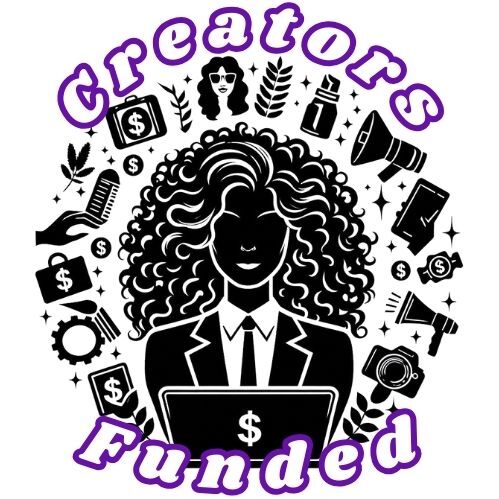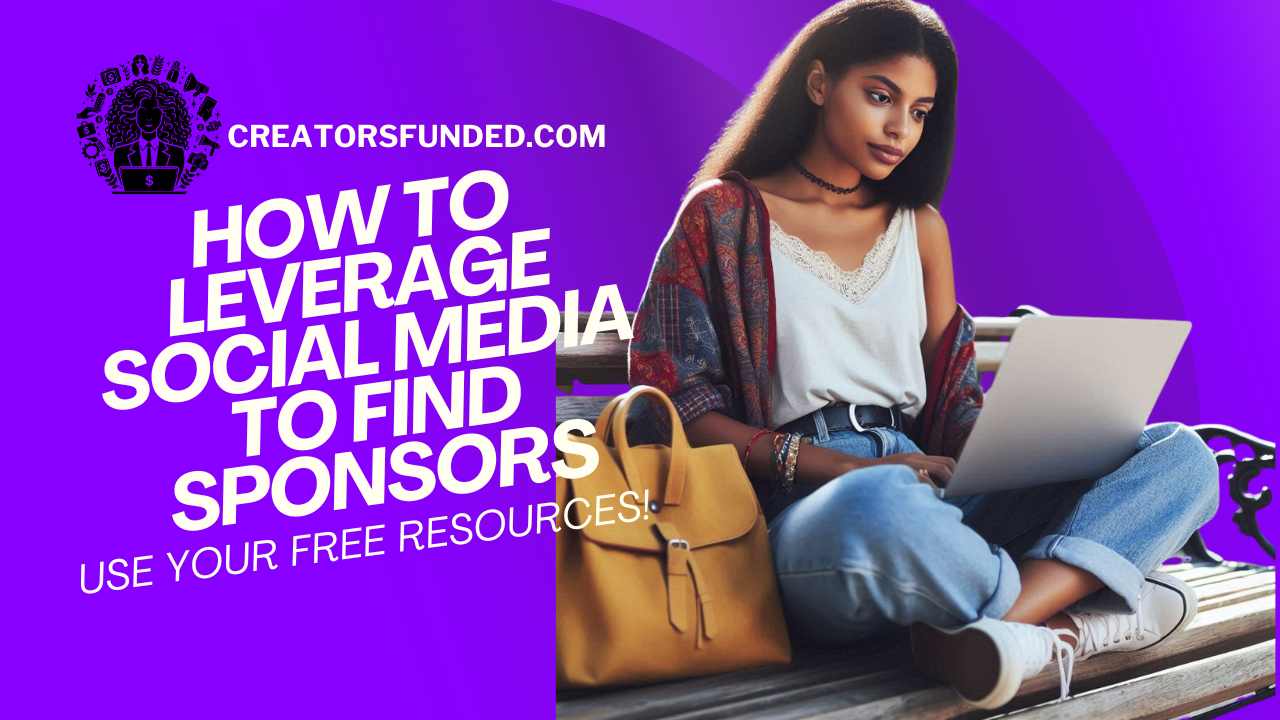I’ve used social media for years to grow my own projects, find supporters, and connect with potential sponsors. In general, whether you’re an athlete, creator, business owner, or organizer, social platforms are a powerful way to secure sponsorships.
Many people post regularly but don’t see results because they miss a few key steps. The good news is that a focused approach improves your chances of getting noticed and forming strong partnerships.
If you’re looking for new ways to attract sponsors, social media is your best friend. You don’t need a massive following. What’s more important is engagement, authenticity, and a clear message.
In this guide, I’ll show you how to use social media strategically to get on sponsors’ radar and build valuable relationships that benefit both sides.
Here’s my step-by-step approach to using social platforms to attract sponsors, with practical tips you can put into action right away. As social media keeps growing, these methods have become even more effective for creators and brands alike.
Choose the Right Platforms for Sponsorship

Every social media platform has strengths. Before you pitch sponsors, it’s important to know which platforms fit your goals and target industry. I picked my main channels based on where my audience hangs out and which brands I wanted to connect with. Taking the time to evaluate each platform helps you direct your effort and energy for better results.
Popular Platforms and Their Sponsorship Strengths:
- Instagram – Great for visual content, lifestyle brands, and reaching a younger crowd.
- Twitter (now called X) – Good for live events, trending topics, and fast interaction.
- LinkedIn – Best for B2B deals, business sponsorships, and professional connections.
- YouTube – Perfect for videos, tutorials, reviews, and longform content.
- Facebook – Solid for community building, group events, and a wide demographic.
- TikTok – Powerful algorithm that delivers highly engaging, personalized short-form videos.
For example, if I’m in the fitness niche, Instagram and YouTube are usually my top choices. For tech or business, LinkedIn stands out. Instead of spreading myself too thin, I put my effort into one or two channels at most. This way, I keep things manageable and consistent.
Pick your platforms wisely so you can focus your energy, connect with your core audience, and draw in the right sponsors.
Build an Authentic, Sponsor Friendly Profile
Sponsors check out profiles before reaching out. They want to see professionalism, activity, and a match with their brand.
My own profiles highlight my strengths and keep things real. That helps build trust and shows what I offer.
Profile Optimization Tips:
- Use a Clear Bio – Let people know who I am, what I do, and what I stand for.
- Consistent Branding – I keep my profile visuals and messaging in line with my personal or business brand.
- Highlight Achievements – I show off key stats (like audience size, reach, or notable collaborations) in my bio or about section.
- Contact Information – Make it really easy for sponsors to get in touch. I include an email address or direct link.
First impressions really matter on social media. A clear, inviting profile sets the tone for sponsorship discussions. I often update my profile images and bios to showcase new accomplishments or milestones. Keeping things fresh shows I’m active and invested in my craft.
Create Engaging Content that Attracts Sponsors

Brands want to work with people who can capture attention and deliver value. When I share content, my focus is on quality over quantity. My posts need to reflect my expertise, personality, and what makes me unique. I make sure to share stories, behind the scenes moments, and lessons learned, so followers and sponsors alike get a real sense of my style and values.
Content Ideas that Appeal to Sponsors:
- Behind the scenes stories – These posts let followers (and sponsors) see how I work.
- Product reviews or demonstrations – Brands love seeing their products featured in an authentic way.
- Giveaways, contests, or audience interactions – These boost engagement, which sponsors often look for.
- Regular updates on milestones – Sharing growth, events, or progress proves consistency.
- Clear mention of collaboration opportunities – I’m open about looking for sponsors, which signals to brands that I’m ready to partner up.
Posts don’t need to go viral. High quality, on brand content that engages my followers works much better for attracting long-term sponsors. I always showcase my unique strengths and never shy away from showing personality. This helps brands see that I’m genuine, passionate, and committed which is a combination that stands out in today’s crowded social landscape.
Grow and Engage Your Audience Consistently
Brands care about two main things: audience size and engagement. But even with a small crowd, high engagement wins sponsors over. I focus less on the follower count and more on meaningful interaction. Building real relationships pays off and attracts brands who want authentic voices.
Audience Engagement Strategies:
- Reply to comments and messages quickly – Shows I value my community.
- Ask questions – Posts that invite opinions or stories get people talking.
- Consistent posting schedule – Regular updates help keep followers interested.
- Collaborations with others – Sharing audiences with likeminded creators increases reach and credibility.
Real engagement sends a strong signal to sponsors that I have a loyal, active audience. Sometimes, I ask my followers what they want to see. Their feedback shapes my content and shows sponsors I listen. Occasionally, I run a quick poll or story Q&A, so my community feels heard and involved. Consistency and openness keep your crowd coming back for more.
Research and Target the Right Sponsors
Before pitching anyone, I do my homework on which brands fit my style, values, and audience. Sending generic messages rarely leads to success. Instead, I look for companies active on social media and see how they work with partners. This targeted approach helps me reach out with a relevant, tailored pitch, rather than getting lost in a sea of emails and messages.
How I Find Potential Sponsors:
- I check hashtags, keywords, and sponsored posts in my niche to spot brands already invested in influencer partnerships.
- I look at who sponsors others in my field.
- I create a shortlist of sponsors whose products or missions match mine.
Building a sponsor list helps me focus my outreach and create a tailored pitch for each one. When you take the time to research, it shows sponsors you respect their brand and have real interest in working together.
Beyond simple online searches, I often check brand websites and social feeds for any press releases or news about recent sponsorships. This helps me further refine my list and keeps my outreach smart and focused.
Reach Out Professionally and Make Your Pitch

Reaching out to sponsors on social media works best when I’m professional and personal. A copy and paste DM never gives good results. My pitches show that I know the brand, genuinely like their work, and have a clear idea of how I can help. That level of personalization creates trust, making brands more likely to reply positively.
What I Include in My Pitch:
- A clear introduction – Who I am, what I do, and why I think we’re a good fit.
- Evidence of engagement – Brief stats or stories to show my impact.
- Specific ideas for collaboration – This could be a sponsored post, product review, event partnership, or something unique.
- Easy steps for next contact – I suggest jumping on a call, exchanging emails, or whatever the next step is.
I reach out through DMs or emails, depending on the platform. Following up politely after a week or two keeps my pitch on their radar. I always double-check any brand guidelines available to make sure my message lines up with their voice and policies.
If you don’t hear back, don’t be discouraged. Sometimes, persistence pays off when combined with respect and patience.
If you want to learn more about Pitching Strategy, click the button below to see my Step-by-Step Guide on How To Pitch Brand Sponsorships As A Creator.
Showcase Past Partnerships or Results
If I’ve worked with brands before, I highlight those examples in posts or stories. Even a small collaboration adds proof that I’m easy to work with and deliver value. This is where I try to list out key numbers to show impact—brands look for proven results before committing to new deals.
How I Share Results:
- Posting about successful campaigns using clear numbers (reach, clicks, sales, etc.).
- Featuring testimonials from past brands.
- Writing a quick case study in a blog post or series of stories.
Over time, this builds my credibility and makes it easier for more sponsors to say yes. Even if results are modest at first, consistency shows you’re reliable and improving, which matters to brands hunting for longterm partners.
Maintain Longterm Sponsor Relationships
Securing a sponsor is great, but keeping them for the long run is even better. I give sponsors regular updates, share performance stats, and check in to see if there’s anything else I can do. Strong sponsor relationships lead to more opportunities and steady support.
Sponsors appreciate proactive communication, so I often send out a report or summary after big campaigns, highlighting what worked and asking for fresh ideas for future collaboration.
Sponsor Relationship Tips:
- Send monthly or campaign end reports with clear results.
- Ask sponsors for feedback.
- Offer creative suggestions for future projects.
- Publicly thank or tag sponsors (when appropriate), giving them extra exposure.
Being proactive keeps sponsors happy and often leads to referrals or ongoing deals. Every few months, I reach out with new collaboration concepts or ask how their goals have shifted, so I’m always in sync with their needs.
Frequently Asked Questions About Social Media Sponsorship
Do I need a huge following to get sponsors?
Not always. Sponsors pay a lot of attention to engagement and content quality. I’ve seen people with 1,000 engaged followers attract really good sponsorships, especially in a focused niche.

How long does it take to find my first sponsor?
Results can take anywhere from a few weeks to several months, based on your efforts and niche. I started seeing interest after consistently posting quality content and actively reaching out. Keep your expectations reasonable—brands may take their time to reply or assess your offer.
What if a sponsor wants me to promote something I don’t like?
I always check if the product or campaign fits my values and audience. Saying no to the wrong sponsor keeps my own brand strong and leads to better partnerships down the road. If you ever feel unsure, it’s perfectly fine to check in with your community or trusted friends for a gut check.
How often should I post about sponsors?
I mix sponsored content with regular posts. I avoid overwhelming my followers, so sponsored posts make up about one out of every five or so, depending on the agreement. Always aim to keep your feed authentic and helpful for your audience.
Your Next Steps to Social Media Sponsorship
Here’s the approach I always recommend for anyone trying to connect with sponsors. With social media’s flexibility, you can shape your plan to fit your personal style and goals.
Simple Action Plan:
- Update your social media profiles to highlight your strengths and contact info.
- Pick one or two platforms where your chosen sponsors are active.
- Post content that shows off your personality and engages your audience.
- Make a shortlist of brands that match your niche and values.
- Send out a personalized pitch, and always follow up.
What’s one thing you’ll try this week to get on a potential sponsor’s radar? I’d love to hear about your plans or past wins in the comments. If you take anything away from this guide, let it be the importance of authenticity and consistent effort. Wrapping up, remember that real relationships and great content are what turns a simple profile into a sponsorship magnet.


This was such a helpful read—thank you, Marlinda! As a small creator on Facebook and YouTube, I’m actively looking for sponsors, and the part about building an authentic, sponsor-friendly profile really hit home.
I’ve recently updated my bio, added fresh milestone highlights, and made sure my contact info is front and center. Keeping things consistent and professional across my platforms helps me stand out—and shows brands I’m serious about what I do.
Also loved the reminder that quality content with personality attracts the right partnerships. Great tips all around!
Thank you so much for your kind words! I’m really glad the section on building a sponsor-friendly profile resonated with you and it sounds like you’re already making all the right moves. Updating your bio, showcasing your milestones, and keeping things consistent across platforms absolutely helps you stand out and shows brands you’re ready for serious collaborations.
And yes, quality content with personality is the sweet spot. It’s what makes brands want to work with you. I’ll be sharing more tips soon on how to optimize your content and outreach specifically for platforms like Facebook and YouTube, so stay tuned!
Wishing you the very best as you continue growing and connecting with sponsors!
Warmly,
Marlinda
This is a fantastic and comprehensive guide to leveraging social media for sponsorships! I especially appreciate the emphasis on authenticity and engagement over simply chasing a large follower count. It’s a common misconception that you need millions of followers to attract sponsors, but as you rightly point out, a smaller, highly engaged audience can be much more valuable.
I have a couple of questions that might help clarify things further for readers:
Regarding platform selection: You mentioned choosing platforms based on where your audience hangs out and which brands you want to connect with. Could you elaborate on the research process you use to identify these platforms? What specific tools or methods do you find most effective for understanding your audience’s platform preferences and identifying relevant brands within your niche?
Measuring Engagement: You highlighted the importance of engagement. What specific engagement metrics do you track and prioritize when demonstrating value to potential sponsors? Are there any “hidden gem” metrics that you find particularly compelling that go beyond likes and comments?
Content Strategy: The content ideas you provided are excellent. Do you have any recommendations for maintaining a balance between sponsored content and organic content to avoid alienating your audience? What strategies do you use to ensure your sponsored content feels authentic and aligns with your brand?
Thanks again for sharing your expertise! This article is packed with actionable insights, and I’m eager to implement these strategies to enhance my own sponsorship efforts.
Thank you so much for this thoughtful and encouraging comment! I’m really glad the guide resonated with you, and your follow-up questions are fantastic because they hit on some key areas I’ll be expanding on in upcoming content. Here’s a quick preview:
Platform Selection: Great question! I typically start by analyzing where my content performs best using native analytics (like Instagram Insights or YouTube Studio), and I also ask my audience directly through polls or DMs. For brand research, I look at where my dream brands are most active and what kinds of creators they already partner with. I’ll be sharing my exact research workflow and tools in a future post—stay tuned!
Measuring Engagement: While likes and comments are important, I also prioritize metrics like saves, shares, story replies, and link click-throughs. One “hidden gem” I really like is audience retention on video content—it tells you how engaged people are beyond the surface. I’ll break down how to present these metrics to brands in an upcoming guide.
Content Strategy: Maintaining the balance between organic and sponsored content is huge. I aim for an 80/20 mix. In other words, mostly organic, with sponsored posts woven in naturally. I also make sure my sponsored content tells a story and solves a real problem for my audience. I’ll be sharing a content calendar strategy that helps keep everything flowing without feeling forced.
Thank you again for taking the time to dive in and share such thoughtful questions. I’m excited to dig deeper into each of these topics soon!
Warmly,
Marlinda
This post is packed with actionable advice and real-world experience and is super helpful for anyone serious about landing sponsors through social media. I especially liked the emphasis on engagement over follower count, which is a refreshing reminder in a world obsessed with numbers. The breakdown of platform strengths and how to pitch professionally made the whole process feel much more approachable. The tips for maintaining long-term sponsor relationships were also gold. What’s the most surprising way a brand has reached out to you or discovered your profile?
Thank you so much for the thoughtful feedback! I’m really glad the post helped make the sponsorship process feel more approachable because it absolutely is doable with the right mindset and strategy. Engagement really does carry more weight than a massive follower count, and it’s exciting to see more brands shifting toward that understanding.
As for your question, that’s a great one, and I’ll be sharing a post soon with some surprising and creative ways brands have found and reached out to creators (including one of my own unexpected stories!). It’s always a reminder that your content is working for you behind the scenes more than you think.
Thanks again for being part of this conversation & I’\ve got more insights on the way!